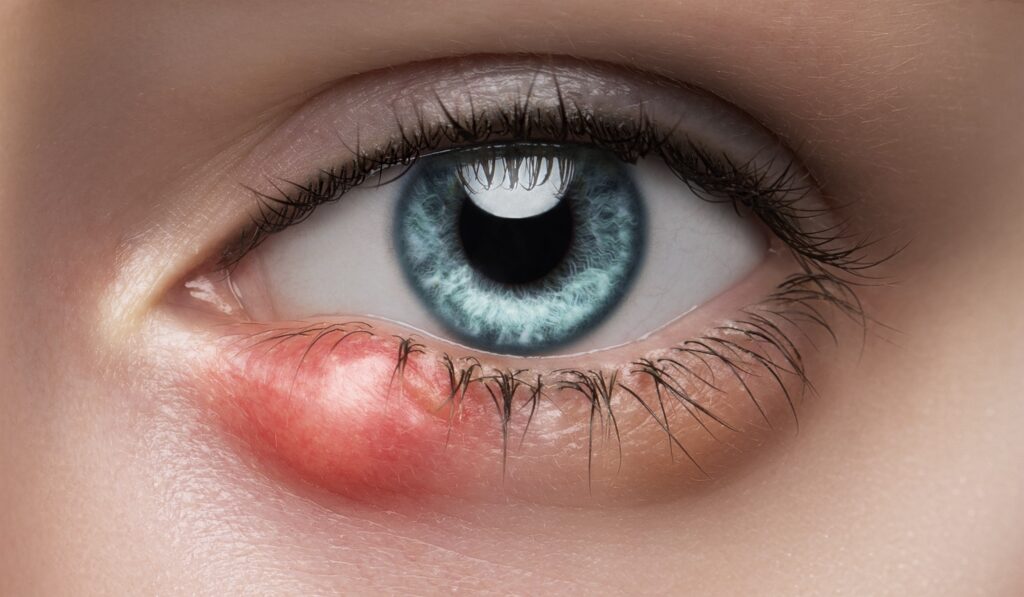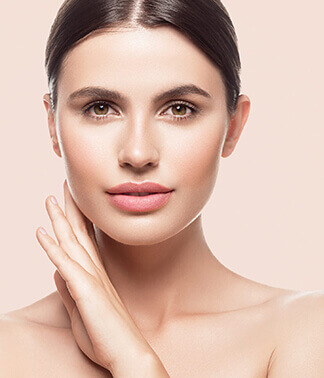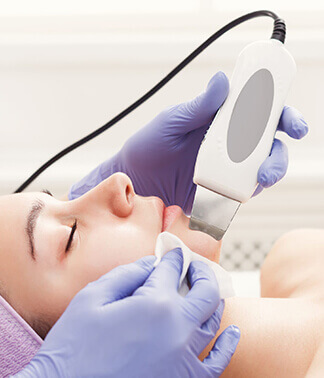Chalazia & Styes
One of the most frequently encountered eyelid problems are chalazia.

A chalazion, also known as an internal hordeolum, is a localized focal inflammation of the eyelids caused by an obstruction of the meibomian glands. The meibomian glands are oil-producing sebaceous glands situated within the tarsal plate of the eyelid. The oils secreted by the Meibomian glands are a necessary component of the tear film and protectant of the eye. When the Meibomian gland orifices on the eyelid margin become blocked, the sebum is released into the tarsus and surrounding soft tissue of the eyelid causing an acute inflammatory response, often in conjunction with pain and erythema. Chalazia are more common in the upper eyelid than the lower eyelid as there are more meibomian glands on the upper lid. Chalazia can also be associated with other conditions such as rosacea and chronic blepharitis.
Management of chalazia depends on its severity. In the acute inflammatory phase, treatment consists of warm compresses and satisfactory eyelid hygiene. Although the exact role of bacterial agents, most specifically Staphylococcus, in the formation of chalazia is not clear, topical antibiotic or anti-inflammatory ocular medications can be helpful. Oral doxycycline, tetracycline, and azithromycin are commonly used, although they should not be administered in children or during pregnancy.
Chronic or persistent chalazion requires surgical intervention. In the majority of cases, the inflammation is confined to the posterior eyelid, and an incision through the tarsus and conjunctiva is appropriate treatment for drainage of the blockage. The procedure involves a sharp dissection, curettage, and excision of all necrotic material, including components of the cyst wall. In rare instances where the inflammatory response is severe on the anterior eyelid, a skin incision is instead used. Injection of corticosteroids is often employed as a less invasive treatment or in tandem with excision for optimal results.
Styes or External Hordeolum:
A hordeolum is an acute, typically staphylococcal, infection associated with localized pain, redness, and swelling of the eyelid. The infection can involve the glands of Zeis, forming an external hordeolum or stye, or the meibomian glands, forming an internal hordeolum. The majority of hordeola are external caused by an obstruction of an eyelash follicle and infection of associated glands.
Most hordeola resolve on their own, but consistent application of a hot compress or antibiotic ointment can be beneficial. In the case of an external hordeolum, the infection can appear to be concentrated around an eyelash follicle in which case the eyelash can be epilated to promote drainage as treatment. In rare cases, hordeola may progress to superficial cellulitis or even an abscess of the eyelid. In these extreme cases, antibiotic therapy or surgical intervention may be required.
Many patients that suffer from recurrent styes and chalazia chrconic Meibomian gland disfunction. Therefore the treatment of blepharitis is necessary to prevent future chalazia. In the past most patients have been told to wash their eyelids with baby shampoo and use warm wet wash cloths. In our experience we have found that this often causes more inflammation and is not effective at alleviating the problem. After years of treating these patients we have found that the following is very effective at treating this chronic problems.
Eyelid hygiene should be performed daily with pre-medicated pads such as ocusoft pads. These pads have a gentle cleanser and hypochlourous acid which is effective at keeping eyelid bacteria under control.
Warm compresses are best performed with special beaded masks (Masks made by Bruder are readily available). These masks maintain heat for 10 minutes are more and help to liquefy thickened secretions within the Meibomian glands. After heating the eyelids for 10 minutes, gentle massage to eyelids help express the oils from the glands. This is effective for both active chalazia and to prevent future chalazia.
Medical treatment for more severe cases can be treated with topical antibiotic ointment and oral doxycycline.
Newer technology is also available for chronic chalazia. Blephex (microblepharoexfoliation) is a painless procedure that is performed in the office which removes bacteria and biofilm from the surface of the eyelids. This is much more effective at cleaning eyelids than can be performed by patients at home. By effectively removing bacteria from the eyelids, blepharitis is more easily managed.
IPL (intense pulsed light) is a broad spectrum light treatment that has been used for years for cosmetic purposes. Short pulses of broad spectrum light are absorbed by brown and red pigment in the skin. For cosmetic purposes it removes telangiectasias and hyperpigmentation. When applied to the eyelids it effectively reduces the inflammation of blepharitis. Although the exact mechanisms of action is not known, it likely works by killing bacteria, heating up meibomian glands and reducing small superficial blood vessels which can bring in inflammation. Most patients require 3-4 treatments a month a part. These treatments take about 10 minutes and are well tolerated with virtually no downtime.
Other treatments that can be done in the office such as iLux or LipiFlow. These in office procedures gently heat the oils of the Meibomian glands. Then they massage the glands and express them. These maintains the health and integrity of the glands and effectively prevent Chalazia and treat dry eye.



